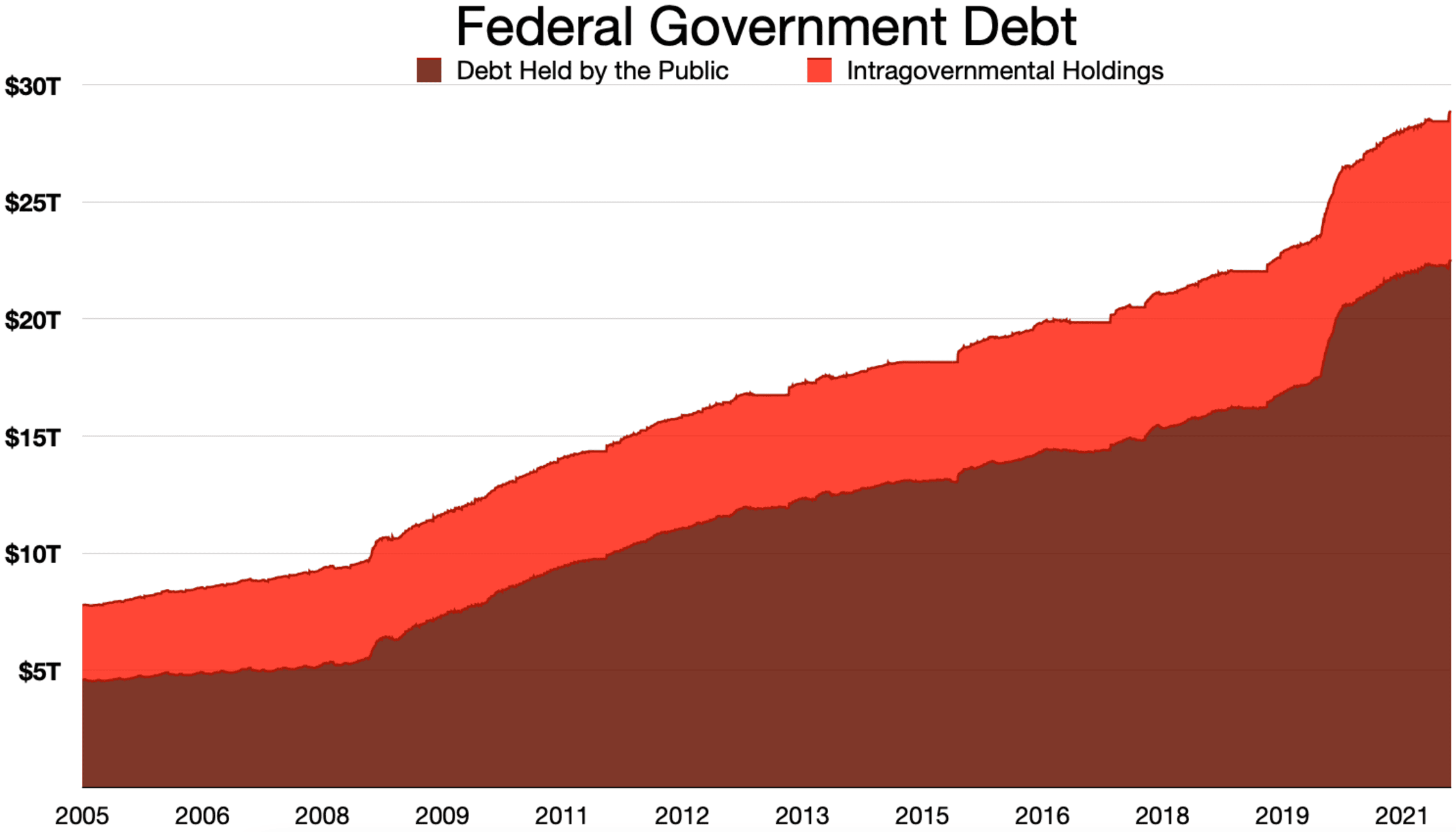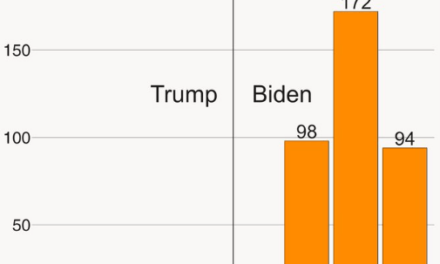We support our Publishers and Content Creators. You can view this story on their website by CLICKING HERE.

Today, the US federal debt officially eclipsed $36 trillion, according to US Debt Clock. (Treasury Department data, which hasn’t been updated today, still has the figure at $35.97 trillion.)
This is just mere months after it famously eclipsed $35 trillion at the end of July. The Congressional Budget Office, Congress’s source for “nonpartisan analysis,” has warned about the deleterious “effects of waiting to stabilize federal debt.” As they point out, “As a percentage of gross domestic product (GDP), federal debt held by the public is thus projected to climb from 102 percent at the end of 2021 to 202 percent in 2051. A perpetually rising debt-to-GDP ratio is unsustainable over the long term because financing deficits and servicing the debt would consume an ever-growing proportion of the nation’s income.”
On a per-person basis, a $36 trillion debt equates to $107,494.78 per person in the United States. To really let this sink in, this is per person and includes children, meaning that even children who are not old enough to express their opinions and values through voting are already saddled with over $100,000 in debt.
Another way to look at this is to think about it in terms of debt per taxpayer. The nation’s debt equates to $218,181.82 per taxpayer. The most recent data we have available reports that the median weekly earnings of full-time workers equates to about $57,150 annually. This means that the median person in the US must work for almost four years and give up every penny of their salary to pay off just their portion of the federal debt.
A nation, like a household, that is in debt can frame it as either a “spending problem” or a “revenue problem.” From an accounting perspective, it would be difficult to discern which this is. From an economic perspective, however, the answer is clear: Congress has a spending problem. If people followed Congress’s financial plan, they would have a credit card debt of over $445,000 against their income of $57,150. Just as we would dismiss out of hand a person who claimed that this was a problem of insufficient revenue, so too should we dismiss political pundits who make similar claims and put forth revenue boosting plans to try to bring Congress’s fiscal house back in order. And yes, that includes Trump’s plan to raise significant revenues via tariffs.
Rather than dwell on about what this grotesque debt does to our nation, I want to use this as an opportunity to put the staggering $36 trillion figure into perspective.
All paper currency in the US is 2.61 inches wide, 6.14 inches long, and 0.0043 inches thick and weighs one gram. Using these dimensions, we can take a page out of Ronald Reagan and update his figures accordingly.
- If we stacked $100 bills one on top of another, the stack would be 24,431.8 miles tall. The Earth has a circumference of 24,901 miles. We could lay this stack of $100 bills around the entire planet and come remarkably close to getting all the way around. In fact, we’re less than $800 billion in debt away from being able to completely encircle the globe, which at the rate Congress spends money should be achievable by April 2025.
- $36 trillion in $1 bills would weigh 39.7 million tons. By comparison, the Hoover Dam weighs about 6.7 million tons.
- If we laid $1 bills end to end, it would be 3.5 billion miles long. Traveling at the speed of light, it would take you 5 hours and 6 minutes to get from one end to the other. As another comparison, Voyager 1, which launched into space on September 5, 1977, is currently estimated to be about 15.4 billion miles away from Earth.
To be sure, there is debate about presenting national debt figures in terms of heights, weights, and distances. Despite Dr. Mahajan’s contentions, this form of presentation still carries meaning, if only because as humans, we have evolved the ability to understand when one number is bigger than another, but by the time we get to millions, billions, and trillions, the human mind is utterly incapable of truly grasping the scale of these numbers. As the saying goes, “even if you have a billion dollars, you’re still roughly a trillion dollars away from being a trillionaire.”
Regardless of these concerns, this level of debt is clearly untenable and must be reversed. At this point, the federal debt is already so large that even if we used every penny of the Federal budget for the next four years, we still would not be able to pay it off completely. For all its tout, the soon-to-be-created Department of Government Efficiency will have a hard time making a dent in the federal debt, even under its most audacious assumptions. Paying down the debt will likely take decades of focused effort. Given political trends, this will take a bipartisan effort.
The sad truth is that the federal government, in the last fifty years, has only run a surplus four times. There is a weak case for deficit spending during times of war (historians tend to agree that winning WWII was worth the financial cost) and during times of extraordinary public investment (the US interstate highway system was, again, probably worth it). I’ll even bite my tongue and grant for sake of argument that deficit spending in response to the COVID pandemic may have been worth it (though here, there is much debate). But to run a deficit in a time of domestic peace, economic prosperity, with nary a massive public investment in sight, is not just irresponsible, it’s lunacy.
Congress needs to get its fiscal house in order. It’s high time we hold its members accountable.

 Conservative
Conservative  Search
Search Trending
Trending Current News
Current News 




